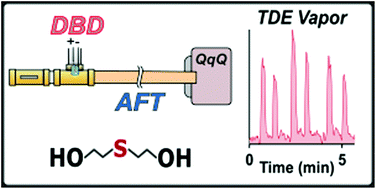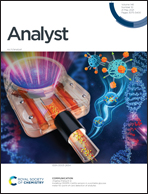Non-contact detection of thiodiglycol vapors and associated degradation products using atmospheric flow tube mass spectrometry
Abstract
Thiodiglycol (TDG) is a synthetic precursor and an environmental degradation product of sulfur mustard (HD). Consequently, its presence can be indicative of illicit preparation or historical presence of chemical weapons, but its lower toxicity lends itself to use as an HD simulant for testing and method development. Detection of TDG vapor often proves elusive with existing techniques exhibiting undesirably high detection limits in the gas phase (>ppm). Moreover, traditional approaches to detecting TDG vapor rely upon non-specific approaches that do not provide the certainty afforded by mass spectrometry. Using atmospheric flow tube mass spectrometry (AFT-MS), which has previously demonstrated the capacity to detect parts-per-quadrillion levels of vapor, we evaluate the capacity of this approach for non-contact residue analysis based upon TDG vapor sampling and nitrate clustering chemistry. Furthermore, we discuss challenges with ambient vapor detection using the AFT-MS system and associated observations related to TDG degradation into 2,2′-sulfonyldiglycol from exposure to ambient conditions with vapor detection being possible even after 7-weeks of sample aging.



 Please wait while we load your content...
Please wait while we load your content...